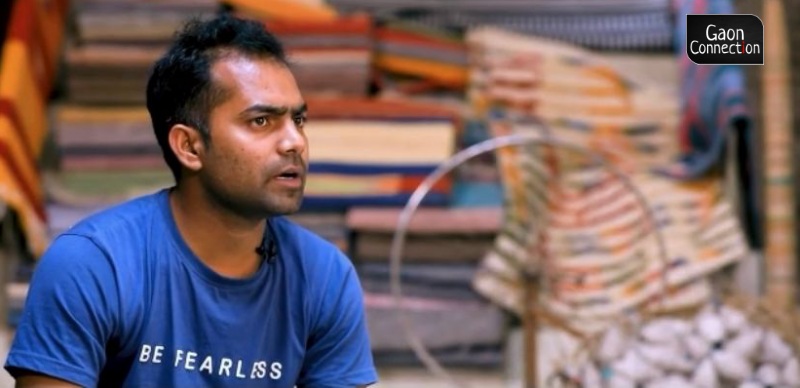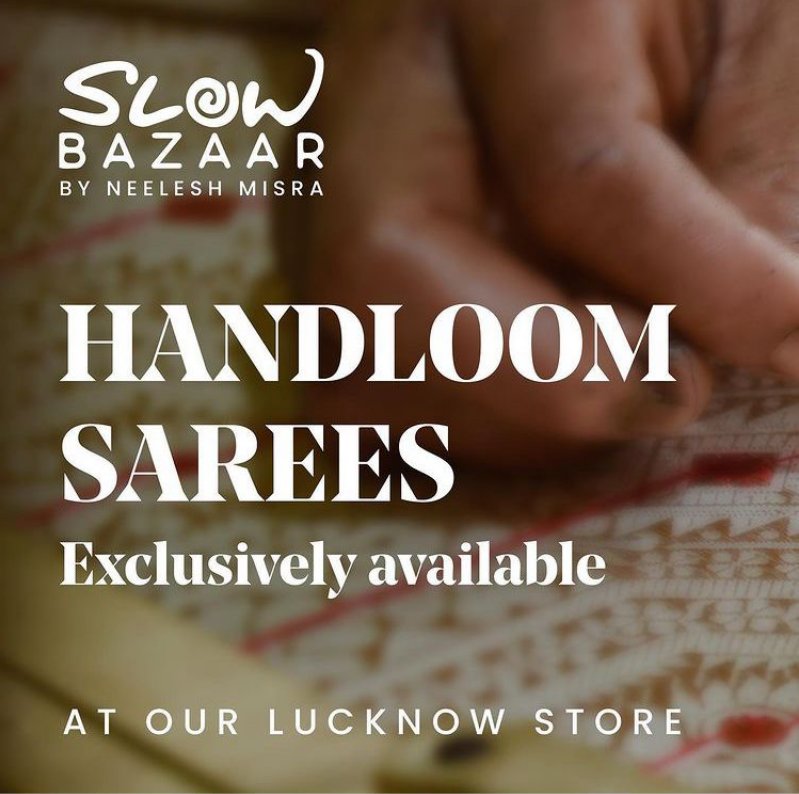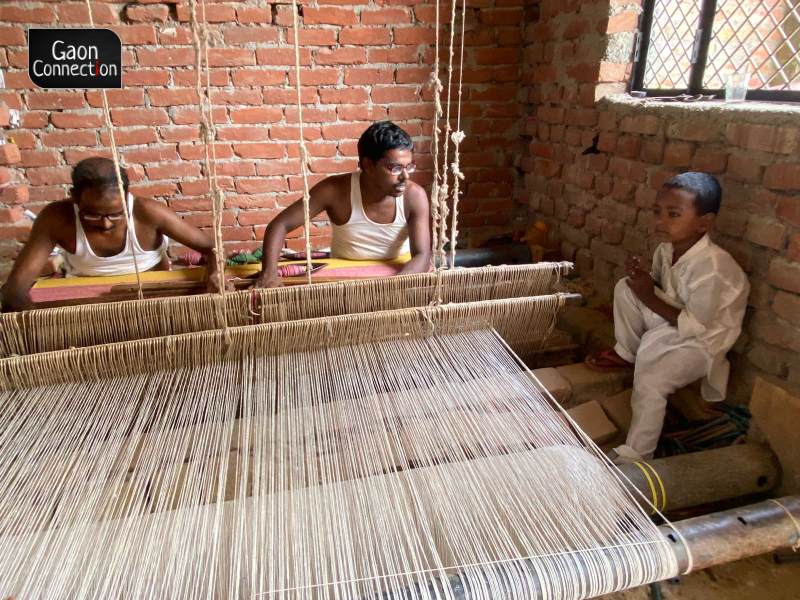Rugs to Riches: The dhurrie makers of Sitapur
Handwoven dhurries from Khairabad in Uttar Pradesh fly all the way to America, Japan and Europe.


Unlike his father and grandfather, who hawked dhurries in mega cities, Ansari is running his family’s traditional business of dhurrie-making from Khairabad. All photos by arrangement.
There was a time when weavers like Syed Ahmed from Khairabad in Sitapur district, Uttar Pradesh, would weave dhurries at home and then ferry them on cycles, selling them door to door. But in the past two decades things have changed and for the better.
“My father had to travel to Chennai, Delhi, and other big cities, to sell his handwoven rugs and carpets. For months, he was away from his home in Uttar Pradesh hawking dhurries in order to make a living,” Ahmed’s son, Fakhruzzaman Ansari, said.
Back then, Sitapur used to be a very poor district and a lot of people migrated out of Khairabad in search of greener pastures. “In our neighbourhood, there were only two pucca [cement and brick] houses,” recollected Ansari.
About 15 years ago, a change started to sweep through Khairabad with a boom in the dhurrie-making business. As a result, a lot of local people found employment and no more had to migrate in search of work. Soon Khairabad became famous for its dhurrie products. The product quality also improved too.

Unlike his father and grandfather, who hawked dhurries in mega cities, Ansari is running his family’s traditional business of dhurrie-making from Khairabad. Rather than him going door-to-door selling dhurries, the buyers now come to him from far-flung areas. The demand for his handwoven rugs has been soaring too.
Selling dhurrie was Ansari’s family business but initially he wasn’t interested in the business of carpet weaving. With a master’s degree in Physics, Ansari was looking for a government job. “The competition was fierce, and I got tired of waiting for something to happen,” he recalled. Then one fine day, he decided to join the family business and take it to greater heights.

Today Ansari has a factory where 15 artisans weave dhurries in pit looms. “There are more weavers who prefer to weave in their homes,” he said. The raw material is sourced from various places. “We procure cotton and wool from Panipat, jute from West Bengal, and synthetic fibers from Surat,” explained Ansari.
Also Read: Want to improve your crop yield? Adopt bee farming
Dhurrie rugs are durable due to their tight weave, are reversible, lightweight, and foldable. Talking about the cost of his products, Ansari said that the cost ranges from Rs 20 per square feet to Rs 200 per square feet of the dhurrie. “The more complex the design, the more expensive the product will be,” he said.

Ansari directly supplies goods to showrooms and stores in cities like Mumbai, Nasik, Pune, Madurai and sells them to traders. “When interested parties including traders approach me, I give them a sample of my work. They then consult with their buyer. Once the buyer okays the sample, the weaving starts,” he said. Ansari also sells finished products at exhibitions all over India.
There is a huge demand for dhurrie products like a centre table runner, bedside runner, and yoga mats in Europe, Japan, and America, said the craftsman. Exhibition of dhurrie items in these countries also gives a fillip to the business.
Also Read: Javed Sayyed’s handcrafted, GI-tagged Channapatna toys

Ansari said that the rent of stalls in foreign countries is exorbitant and unless the central government gives a subsidy for setting up stalls, people like him won’t be able to directly sell their products. He said that at present, only two people from Khairabad directly export their dhurrie products.
Support from the government is crucial. It was the government’s intervention that helped dhurrie business pick pace in Khairabad 15 years ago. “I have heard that the Manmohan Singh government formulated some policy for the benefit of handloom weavers that changed our lot,” Ansari said.
Moreover, dhurrie from Sitapur has been chosen under the One District One Product (ODOP) scheme launched by the Government of India. Under this scheme, one product will be branded and promoted from each district of India. The Uttar Pradesh government is also promoting these dhurries under the ODOP.
However, Ansari said the introduction of GST (good and service tax) for handloom products had complicated the operations. “It took me some time to figure things out.”

The GST rate on garments, textiles, and footwear was raised from 5 per cent to 12 per cent from January 1 this year by the Central Board of Indirect Taxes and Customs on the recommendations of the GST Council. The tax was increased to help the centre, which was experiencing a revenue shortage, by stabilising tax revenues and freeing up funds for welfare initiatives.
The pandemic has also disrupted the business, say the artisans. Moreover, there is growing competition from China and Bangladesh. “China makes dhurrie with machines, hence their products are cheaper. Mine is a hundred percent handloom product,” said Ansari.
Also Read: Slow, sustainable and sweet

